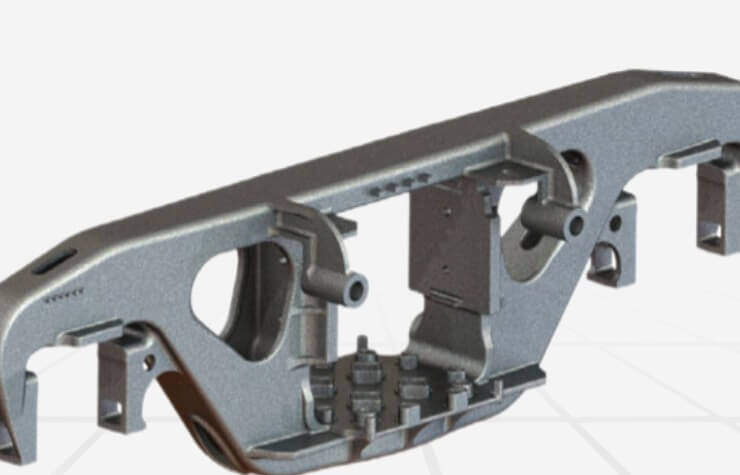Various technologies are used to produce car side frames. The most common are casting, cold and hot stamping. Each method has advantages and disadvantages. Understanding the pros and cons of each frame production method will allow you to choose the most suitable option that meets the requirements for the products.
Casting
Grey cast iron and carbon steels are often used to cast frames. Alloyed cast iron and steel, as well as aluminum alloys, can be used. The choice of material depends on the requirements for strength, physical and mechanical characteristics of the finished products.
For the manufacture of casting molds, wooden, metal or sand molds are used. They make it possible to produce side frames of complex spatial configuration.
Molten metal is poured into casting molds under the influence of gravity or excess pressure. Compliance with temperature conditions and casting speed is important for obtaining high-quality castings. Violation of the technology leads to the formation of shrinkage cavities and other defects.
After removal from the molds, the castings can be subjected to heat treatment (hardening, tempering). Then mechanical processing is performed to improve the quality of the surface, bringing the finished parts to the required dimensions.
The main advantage of casting is the ability to use a wide range of materials for the production of frames. The disadvantages include the high cost of finished products. But this is compensated by high strength and wear resistance.
Hot stamping
A workpiece in the form of an ingot or rolled product of a suitable grade is heated to a temperature of +1100–1300°C in a furnace. It is then placed into a stamping press. Under pressure of up to 10,000 tons, the workpiece takes the shape of the die cavity. Intense plastic deformation of the metal occurs.
After stamping, the part is subjected to hardening and tempering to improve mechanical properties. Heat treatment is needed to increase strength side frames of cars, resistance to various types of loads. To achieve the required dimensions and high surface quality, the part is subjected to turning, milling and other types of processing.
The production of side frames by hot stamping has the following advantages:
possibility of manufacturing parts of complex shape with high precision;
high strength and wear resistance of parts;
possibility of producing parts from high-strength steel grades;
the ability to produce a large number of parts without compromising their characteristics.
The disadvantages of this method include the need to use expensive equipment and tooling.
Cold forming
This method is widely used for the manufacture of side frames of carriages. The blanks are cut from steel sheets. Then they are placed in stamping equipment and deformed using a press at room temperature without preheating.
To increase strength, the finished part can be subjected to hardening, straightening, and hardening treatment. By processing on machines, it is brought to the required dimensions.
Cold stamping has the following advantages:
lower cost of equipment, lower energy consumption compared to hot stamping;
possibility of using thin-sheet rolled products for the production of frames, which reduces material consumption;
high productivity.
The disadvantages of this production method include the lower strength of parts compared to those made by hot stamping.





